✨Englishl✨
✨Englishl✨
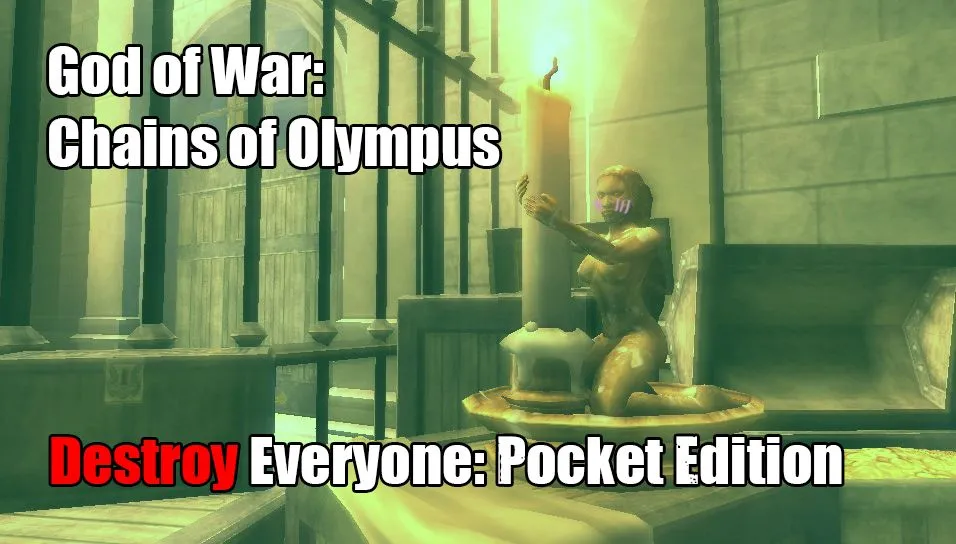
It's very nice that since God of War (2018) came out on pc everyone is playing it and such, I also want to do it eventually and it's one of the games I'm most interested in playing, a strong motivation to eventually build my gamingggggg pc, but that's problems for the future, for the moment I would like to catch up with the story of each of the games in the franchise, because although I've played the three numbered installments (disordered, because I played GoW2 first, then the first, and then GoW3) I still lack the games that came out on PSP, that almost no one mentions them today but who does say that they are great games, today I come to tell you my experience with the first of these, God of War: Chains of Olympus.
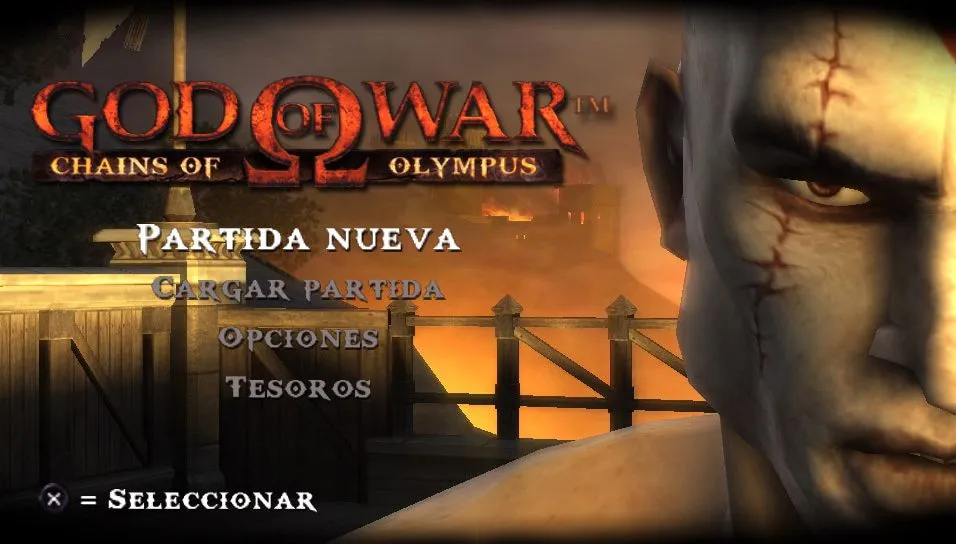
Throughout my life I never had the pleasure of playing on a PSP, so I had no idea how it would feel or its graphics, with games like this, I find it surreal that a portable console had such good graphics for that time, many people compare it to the PS2 in power, and although I doubt it'll reach the PS2 level, in a small screen and with enough detail level, the games look awesome, add to that the current improvements that can be achieved through emulation, a very good way to preserve and play (or replay) those titles that maybe more than one could not try at the time.
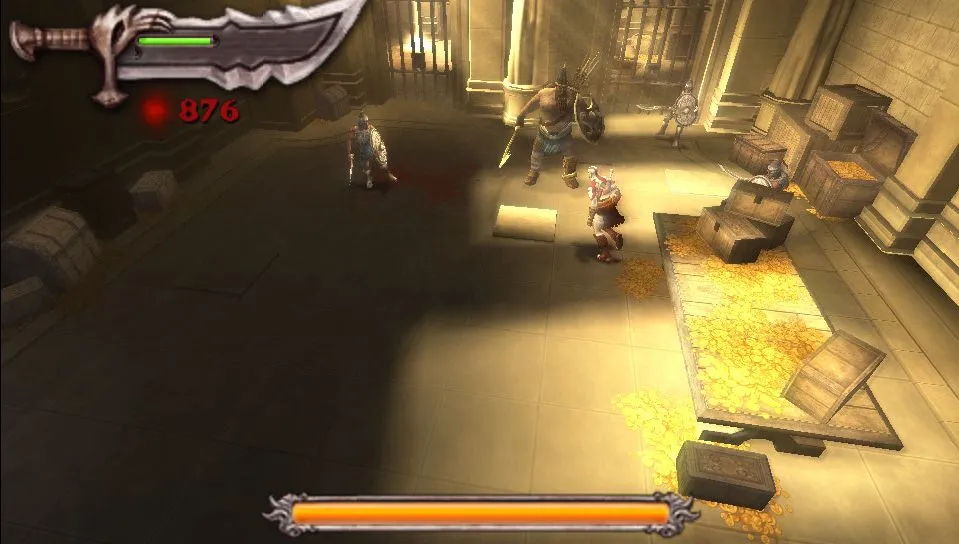
The story goes before the first game, when Kratos did "little jobs" for the gods of Mount Olympus, precisely the game starts while Kratos fights the Persian empire in the city of Attica, this sequence works as a tutorial, but if you've already played any God of War you know how things go, square for normal attack, triangle for strong attack, circle for grabs, you can block, dodge, and in general, be as inhuman as Kratos can be.
What surprises me is how well adapted everything is to work on a portable console, not having a second stick to dodge, we can do it with the main one while pressing L+R and personally I think it works pretty well, with the L alone we can block, and with the R as far as I can see moves will be added later, when we defeat the Persian King (in a pretty brutal way), we get the genie, which is a kind of shockwave that is used with R+Triangle, following that logic then surely there will be moves for R+Square or R+Circle (or not).
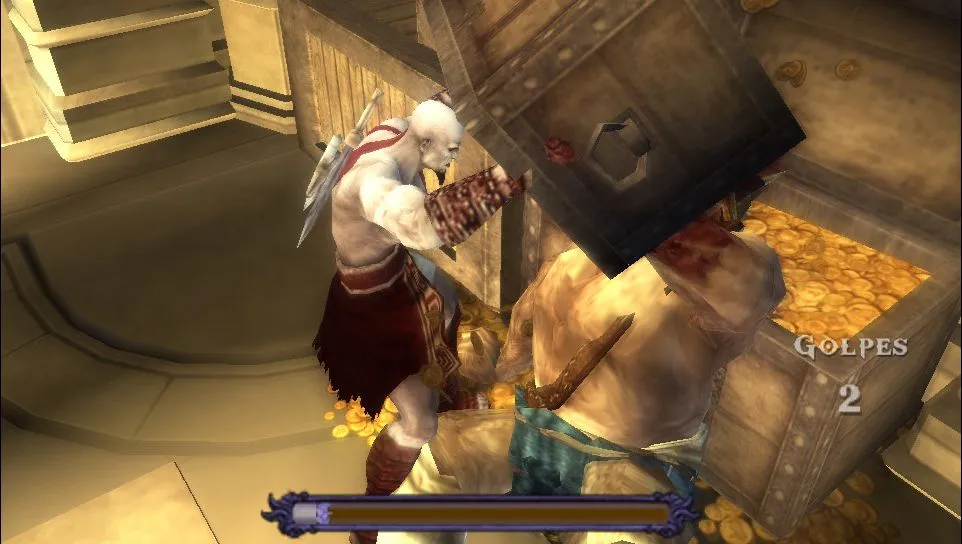
A curious fact, is that this God of War also has one of "those" mini-games... you know which ones hehe, but I can't show you much about that.
To close the tutorial, they throw us a boss of those very characteristic of God of War, a basilisk of the Persian empire with which Kratos will fight one by one on a bridge that is collapsing, also the game boasts its distinctive Quick Time Events, for example, there are times when the basilisk climbs a wall, and we can take advantage of hooking it with swords to knock it down and throw a tower on top as a gift, Kratos is very kind huh.
After defeating the basilisk most likely the game will warn us that we have enough orbs to level up our blades, as in the other games, defeating enemies we gather red orbs that work as experience to strengthen Kratos' attacks and unlock new moves, the first upgrade gives us the L+Square, which makes Kratos turn the blades of chaos creating a tornado that works very well against several enemies at once.
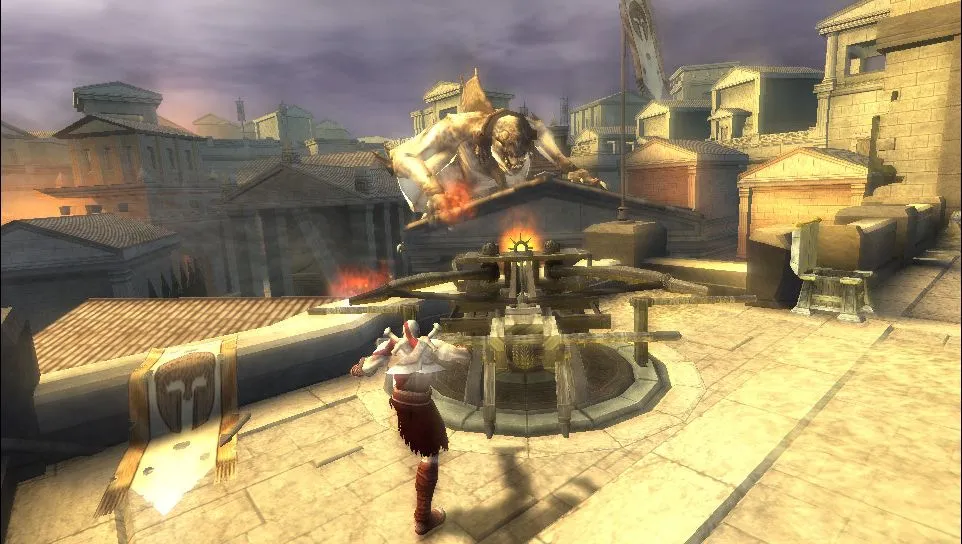
After an introduction that wastes no time in getting us into the action, a catastrophe occurs, the sun literally falls from the sky and the world is left in darkness, Kratos arrives at the city of Marathon, where he encounters a different kind of enemy and the city shrouded in fog, eventually Kratos arrives at the Temple of Helios where Athena, usually his guide on Olympus, tells him that Morpheus (not the one from the Matrix, but the Greek god) has taken control of the world and put several gods of Olympus to sleep due to the absence of Helios, the god of the sun, so it will be Kratos' task to find out what has happened to him.
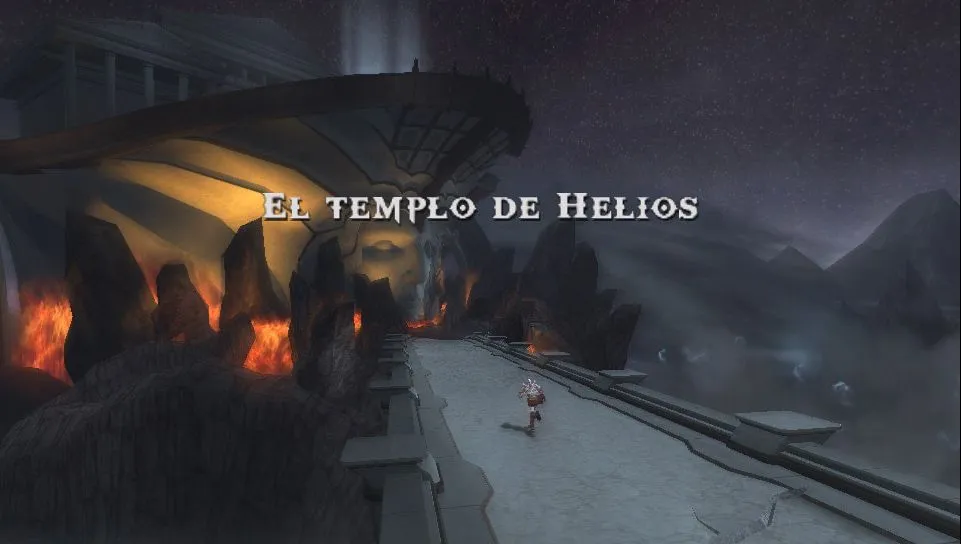
Personally, I've always been strongly attracted to Greek mythology, and I think God of War is one of those franchises that has best adapted and exploited it to the point that Kratos ran out of gods to kill and that's why they had to switch to Norse mythology, which also interests me to know through the most recent game of the franchise and the future GoW: Ragnaök, but for the moment, I'll focus on continuing to discover the plot of this Chains of Olympus, with something as big as THE SUN involved it seems quite interesting to me, besides, as in other installments, every so often there are "books" that explain you a bit of mythology and although obviously there are things that are not exactly the same, it gives you a good idea of the Olympian myths.

Anyway, so far I've reached the temple of Helios, I have to keep playing and progressively I'll bring you my impressions and my experience, but at first, it seems to me a GoW quite competent and fun as any other, thank you very much for reading.
See you around, bye bye.
See you around, bye bye.
Screenshots were taken by me 📷
Translated with help of DeepL

✨Español✨
✨Español✨

Está muy bonito que desde que salió el God of War de PS4 en pc todos lo anden jugando y tal, yo también quiero hacerlo eventualmente y es uno de los juegos que más me interesa jugar, una fuerte motivación para eventualmente armar mi pc gaminjjjjjjj, pero eso son problemas para el futuro, por el momento me gustaría ponerme al día con la historia de cada uno de los juegos de la franquicia, pues aunque he jugado a las tres entregas numeradas (bien desordenadas, porque primero jugué al 2, luego al primero, y luego al 3) aún me faltan los juegos que salieron en PSP, que casi nadie los menciona a día de hoy pero quien lo hace afirma que son juegazos, hoy les vengo a narrar mi experiencia con el primero de estos, el God of War: Chains of Olympus.

A lo largo de toda mi vida nunca tuve el placer de jugar en un PSP, así que no tenía la menor idea de cómo sería su sensación o sus gráficos, con juegos como este, me parece surrealista que una consola portátil tuviese gráficos tan buenos para esa época, mucha gente la compara con la PS2 en potencia, y aunque dudo bastante que llegue al nivel del PS2, en una pantalla pequeña y con el suficiente nivel de detalle, los juegos se ven espectaculares, a eso agréguenle las mejoras actuales que se pueden lograr mediante la emulación, una muy buena manera de preservar y jugar (o rejugar) esos títulos que quizá más de uno no pudo probar en su momento.

La historia va antes del primer juego, cuando Kratos hacía “trabajitos” para los dioses del Monte Olimpo, precisamente el juego empieza mientras Kratos combate al imperio Persa en la ciudad de Ática, esta secuencia funciona como tutorial, pero si ya has jugado a cualquier God of War sabes cómo van las cosas, cuadrado para ataque normal, triángulo para ataque fuerte, agarres en círculo, puedes bloquear, esquivar, y en general, ser tan inhumano como puede ser Kratos.
Lo que me sorprende es lo bien trasladado que está todo para funcionar en una consola portátil, al no tener una segunda palanca para esquivar, podemos hacerlo con la principal mientras presionamos L+R y personalmente me parece que funciona bastante bien, con la L sola podemos bloquear, y con la R por lo que veo se irán añadiendo movimientos posteriormente, cuando derrotamos al Rey Persa (de una forma bastante brutal), obtenemos al genio, que es una especie de onda expansiva que se usa con R+Triángulo, siguiendo esa lógica después seguro habrá movimientos para R+Cuadrado o R+Círculo (o no).

Un dato curioso, es que este God of War también tiene uno de esos minijuegos… ya saben cuales hehe, pero de eso no puedo enseñarles mucho.
Para cerrar el tutorial, nos tiran un jefe de esos muy característicos de God of War, un basilisco del imperio Persa con el cual Kratos luchará uno a uno en un puente que está colapsando, también el juego hace gala de sus distintivos Quick Time Events, por ejemplo, hay momentos en los que el basilisco se sube a un muro, y podemos aprovechar de engancharlo con las espadas para derribarlo y de regalo, tirarle una torre encima, Kratos es muy generoso eh.
Tras derrotar al basilisco lo más probable es que el juego nos avise que tenemos orbes suficientes para subir nuestras espadas de nivel, al igual que en el resto de juegos, derrotando enemigos reunimos orbes rojos que funcionan como experiencia para fortalecer los ataques de Kratos y desbloquear nuevos movimientos, la primera mejora nos da el L+Cuadrado, que hace que Kratos gire las espadas creando un tornado que funciona muy bien contra varios enemigos a la vez.

Después de una introducción que no pierde el tiempo para meternos en la acción, ocurre una catástrofe, el sol literalmente cae del cielo y el mundo queda en tinieblas, Kratos llega a la ciudad de Maratón, donde se encuentra con otro tipo de enemigos y la ciudad envuelta en niebla, eventualmente Kratos llega al Templo de Helios donde Atenea, por lo general su guía en el Olimpo, le dice que Morfeo (no el de Matrix, el dios griego) ha tomado control del mundo y dormido a varios dioses del Olimpo por la ausencia de Helios, el dios del sol, por lo que será tarea de Kratos averiguar qué le ha pasado.

Personalmente, siempre me ha llamado fuertemente la atención la mitología griega, y creo que God of War es de esas franquicias que mejor ha sabido adaptarlo y explotarlo al punto de que Kratos se quedó sin dioses que matar y por eso tuvieron que cambiar a la mitología nórdica, que también me interesa conocer a través del juego más reciente de la franquicia y del futuro GoW: Ragnaök, pero por el momento, me enfocaré en seguir descubriendo la trama de este Chains of Olympus, con algo tan grande como EL SOL involucrado me parece bastante interesante, además, como en otras entregas, cada cierto tiempo hay “libros” que te explican un poco de la mitología y aunque obviamente hay cosas que no son exactamente iguales, te da una buena idea de los mitos olímpicos.

De cualquier forma, hasta el momento he llegado al templo de Helios, me toca seguir jugando y progresivamente les traeré mis impresiones y mi experiencia, pero a primeras, me parece un GoW bastante competente y divertido como cualquier otro, muchas gracias por leer.
Nos vemos por ahí, bye bye.
Nos vemos por ahí, bye bye.
Todas las capturas fueron tomadas personalmente 📷